Pernille Ripp's Blog, page 9
January 13, 2021
A Late Evening Quiet Rally Cry

I tend to look on the bright side of things when it comes to education, to try to find the time to savor the small moments, relish in the growth, look at our successes before lamenting all that is lost. I tend to be a person that “eats the elephant one bite at a time.” Who feels fairly empowered by a thought out to-do list, a well-planned unit, and who tries to look for answers or steps forward rather than dwell on the impossibles. And yet tonight, after endless meetings and navigating all of the information that is coming furiously at us as we prepare to be live with students again in February, I am spent. I am drained, beyond exhaustion but with a restless mind and words waiting to be spilled.
Because the truth is I, along so many others, have innovated my heart out since March 13th, 2020. In fact, probably for a lot longer than that. I have taught from email to email, directive to new decisions. I have risen to the occasion, done all I can, tried to bring my very best every day in order to reach every child, despite knowing that it will never be enough for those who measure our current success against what school was for some before Covid.
And I have worked too many hours, missed too many moments in my family’s life, pushed aside the needs of my own kids, kept my chin up, put on a brave face, and swept my fears and feelings of inadequacy under the proverbial rug because in this nation, the home of the brave, teachers are likened to superheroes who are always supposed to be in it for the kids. And if we falter, if we show fear, if we say enough, well then surely our intentions were never as noble as we claimed. Imposters all along who do not deserve the chance to work with children.
And it’s killing us. Quite literally, as I am confronted with another Facebook post talking about that special teacher, who reached all of their students, dying from Covid. What a world we live in now where it is the very act of being together that can ultimately end our lives. Where going against so many of our teaching practices is what can be the difference between staying safe or not. It used to be guns that killed us.
This post is not a cry for help, don’t worry I know how to take care of myself. I have the links to the meditation apps, the mindfulness moves. The new apps and tech tools that will make it all worth my time. I have the sign ups ready for all of the webinars, the professional development from experts who have not actually taught through this pandemic but speak to those who have. I have self-cared into oblivion, yogaed in the morning, walked in the afternoon, made time for doing nothing, and also those new covid hobbies I was supposed to do. I have worked my way through it all to see the road ahead so that I can get a night of quiet, set boundaries, left affirmative post-it notes, looked for the positive, and stepped away when I could. I have laughed about it. Cried about it. Refused to think about it. Spoken about it. Kept quiet about it. And also just taken it one step at a time, as if I was going out for a jaunty little hike; new adventures await!
I have raised my voice, offered my help, asked questions, offered solutions and reveled in the fact that the district I work in is 100% committed to inviting teachers to the table and keeping us there for the entire discussion. I shudder at what happens to those who don’t get to say that.
And yet, again, despite this, my creative energy is nearing its end, my drive to educate under these circumstances is near extinct, despite the amazing students I get to teach, despite the importance of what we do, despite loving so many things of what it means to be an educator and not knowing whatever else I could possible do in my life that would bring me so much professional joy, I am exhausted. Because let’s face it, we can all continue to try to fold in the cheese, but who invented the recipe to begin with?
Because it’s not us, the educators, who need to put on our capes. Who need to step up as selfless superheroes who will give everything we have in order to save the future. We have been doing that for decades and it hasn’t been enough, it never will be. The change has to be sweeping. Has to start within our classrooms but go to the far reaches of society. Our voices, those of people within the walls of school and those attached to it, must be lifted as we once again push back against what the superhero myth of education really does for all of us. It robs us of our humanity. It takes away our right to say no. It removes the ability to advocate for real change because if we advocate for other possibilities, for work/life boundaries, for hard conversation and more importantly actions, then we are seen as sacrificing children in order to better our lives. Yet that is not true, and we all know it, but nothing works better at silencing educators than a swift “It is best for the kids…”
So tonight, I will once again spend some more time checking in on assignments, tweaking lesson plans, perhaps read a few pages of a book before I fall asleep. I will hang up my cape that I never wanted to begin with and go to bed knowing I did the best I could today but also knowing that this is not sustainable and that we have to continue to say that out loud. That this is not normal, that we are still trying to teach and learn during a global pandemic, and that our best will just have to be good enough. Because that is what’s best for kids, not educators who have nothing left to give.
We will offer ourselves grace and try again tomorrow, with our voices raised. Right after we start our self-care routine, of course.
Love,
Pernille
January 4, 2021
The Promises We Make to Our Readers
2020 was a year I didn’t read much. The normal escape and joy I find within the pages slid out of my grasp as the world sent us constant reminders of our its cruelty and our own mortality. Reading was no longer an escape but rather a dreaded task, one more thing to do on an ever growing to-do list. One more thing I was supposed to fit in as my teaching life and outside life shifted on its head and somehow, some way, we were once again just supposed to make it all work.
I was reminded of how far I had slipped from reading as I spoke to one of my students in a private reading conference in December. His honesty was appreciated as he told me he didn’t really read much anymore, that reading wasn’t his thing and had never really been, and now it just seemed kind of pointless. I don’t know what he expected me to say but rather than fall into tropelike patterns exalting the validity of reading, I instead leveled with him and spoke from the heart, “I hear you, reading does feel kind of pointless right now. It feels like a lot of work. Not pleasurable. Not something that pulls and holds my attention. But what if we both make a commitment to read more? What if I start to read as well, so that we can work on it together?” I am not sure if he believed me, or if that promise even held a lot of meaning, but it was what I needed to kick start my own reading life again. After all, I implore my students on a daily or weekly basis to find space in their lives for reading so why not my own?
There are many promises I make my students every year. Deeply rooted ones that aspire to help them feel safe, valued, seen, and heard within our community, within our curriculum, and within our learning. Closely held ones that push me to grow as an educator and to always reflect on what I am doing, to try to do no harm but instead recognize my own shortcomings in order to be better than I was. There are many promises I repeat throughout the year, some small, others major. And yet some of the ones that are nearest to the work we do center themselves within our reading journeys. Promises that I don’t think just my students deserve to have made to them, but all kids really, in order to create learning communities that not just focus on the content we must cover but the human development we get to be a part of it. But sometimes those promises can get lost, pushed off the table as we are faced with yet another set of commitments thrust upon us, forgotten as we swim in our survival modes trying to simply make it through the day and yet, these promises, these rights really are at the center of the transformative literacy experiences students should be a part of, so what may these promises be?
I promise to read. While I am often asked how I find time to read the books my students read, there is no easy answer because I don’t find the time. I make the time, and much like every other person in the world, I don’t have a lot of it. Yet I do know that every day, I can read a few pages. Every week, I can read a chapter book, read some picture books and constantly expand my knowledge of the books available to be placed in the hands of kids and recommended to fellow teachers. I read because I ask my students to read, it is as simple as that.
I promise to stay current in my reading. I remember laughing alongside my niece when we compared our 9th grade English class required reading lists because while we span 22 years in age difference, our lists were nearly identical. In 22 years, no new books had been added, in 22 years nothing had apparently risen to the top of what deserved to be explored by students across many high schools in America. What a loss this is. Because I can tell you that every year, books that will someday be considered a classic text are published, just waiting to be discovered by those of us who choose books. Every year, there are books that will transform the lives of readers, just like many classic texts have done for some. Every year, there are new works that beg us to ponder deeply about the human condition, even at the elementary level. But we cannot know this if we don’t stay current in our own reading. So I pursue the new, not in a dismissal of the old but in the rampant belief that new books deserve to be taught, to be discussed, to be brought into our learning alongside those that have occupied the space for many years.
I promise to read broadly. If my reading life was only for myself, I would never read a sports book, I would never read books about dogs, or mermaids, or a lot of historical fiction. I would focus simply on the texts that I crave and leave it at that but since I know that my students look to me for reading recommendations and ultimately search the collection of books I curate in our classroom to find their next read then I need to ensure that what they encounter shows a broad and inclusive lens of the world. That means setting my own reading desires aside at times and reading wildly in order for my students to have the opportunity to do the same. I need to recommend all sorts of books. I need to know all sorts of books. I need to purchase all sorts of books. And I need to recognize the gaps that may exist within our experiences and whose stories are centered in order to be able to actively work on filling them. It doesn’t matter that I teach a very homogeneous population because the world is not homogenous, so neither should our book collection be.
I promise to remove harmful or outdated books. I am grateful to have access to many people who read with a different lens than I do, that read with a lot more knowledge than I bring, and that share so graciously of their expertise in order for all of us to grow. My promise, therefore, is to listen and to act. If a book that I have in my classroom collection is problematic, even if I didn’t see it at first, then the least I can do is pull it. If a unit is centered too much on the story of only one type of journey, then my promise is to expand it to, to seek out sources that can help me expand the unit or question the unit altogether. In this day and age, there are so many people willing to share their expertise, such as Dr. Deb Reese and Dr. Jean Mendoza, Dr. Laura M. Jimenez, Dr. Kim Parker, Julia E. Torres, Tricia Ebarvia and Lorena Germán of #DisruptTexts and the incredible group of thinkers from We Need Diverse Books founded by Ellen Oh, all we have to do is tune in and listen and to not take it personally when a book we may have loved or grew up with fond memories of, or even one we have recently discovered and loved, is given a critical review. Open up our ears, listen in and do the right thing instead of clinging to our notions of perhaps we can make it work, or maybe it is not so bad after all.
I promise to pre-read. While I used to love discovering a new read aloud alongside my students, I now see the exploration I cut myself out of by not reading it first on my own. I now see the shortsightedness of not sitting down with a book and truly pondering how it would weave into the tapestry of our year together, to truly wonder whether this singular text deserves to be at the center of the work we will do for several weeks. When we don’t pre-read our texts, we may not see the potential hard conversations that we need to prepare for in order to successfully navigate them alongside kids. The extra wrapping we need to provide for the texts, the images and other venues of exploration that should be taught alongside it. Yes, the thrill of a new discovery is something I miss, but I would much rather be fully prepared to unpack a read aloud by pre-reading the text.
I promise to be honest about my reading. I have said before that kids don’t need perfect reading role models, they need us, the flawed ones, that are readers even when we don’t read but that share about the struggles that we sometimes face when it comes to staying connected to reading. My students don’t need to know me as a perfect reader, instead they need to know that I too, sometimes, don’t have the energy, that I too, sometimes, have a hard time finding a book, that my attention wanes, that I get bored, that I get frustrated, that I sometimes binge-watch TV instead of picking up a book even though I know what is better for me. That my reading life ebbs and flows but that the one constant I do have is that I always come back to it. That I still give myself the gift of considering myself as a reader even if I am not actively reading.
I promise to afford my students the same rights that I hold dear as a reader. I have written much, and spoken at length, about the rights of readers. About how our students every year create their rights and it is then my job to honor and protect them. And so those same rights come down to the same promises I make every year to myself as a reader and to my students. I can abandon books, I can choose to not read a book even if everyone tells me to read it, I can choose to speak about books or not, to recommend or not, to forget about a book or not. I can choose freely and widely, and I can get access to books to those where access does not come easy.
It is easy to get lost in our reading when the world tugs at our fingertips, when our piles of work seem insurmountable, when even taking care of ourselves seems like too much work. I know I have gotten lost but only for a little while, the path is still there, we are still readers even if we step off of it. Our students deserve to be in rich literary driven classrooms and curriculum that is not centered around the voice of one, but instead the voice of many. Our students deserve to have their stories told in the pages of our books, and they deserve to see the stories of others unlike them. Not to have their reading journey shaped by only one voice, or only one way, but instead a reflection of the many paths that lead us into reading and keep us there for years to come.
There are many promises to make, the question is, how will we honor them?
December 31, 2020
A Year in Review – 2020
I usually end the year with an exploration of my chosen word for the upcoming year and yet, this year, this one whose last day I simmer in today, seems to call for a different exploration. One of the year that has passed, a moment to not only contemplate the lessons learned, but also all of the things that were wrapped in good, otherwise, I fear this past year will only be known for all of its tragedies. For the missed opportunities and not those I gained. So inspired by Dr. Kim Parker’s review of her year, I thought I would do the same.
While it was a year marked by less, I only wrote 48 blog posts this year, it was also a year marked by more. More time with my children, more time sitting in the quiet, the most time I have ever spent home in a stretch as all my normal travels ground to a halt. More nature. More purpose. More innovation (maybe too much). More work to be done. And yet, there was writing, not as much as I normally do, but then again, this was not a normal year. This blog turned 10 (!) and so at times it feels like I have said it all before, being distanced from my students and forced into 9 months of virtual teaching also changed the space I made for contemplation and writing. The energy reserves were drained a lot sooner than ever before, the energy had to be preserved for the kids’ whose educational success was entrusted to me no matter what the world threw at us. So I collaborated, created, and shared as much as I could on this blog, through a series of live webinars this summer, and also through our Facebook group but rather than focus as much on pedagogy and philosophy, there was a larger emphasis on the practical. The tools I found or created in order to navigate our new normal.
The top blog posts this year reflect our new reality.
Picture Books Read Aloud Videos for Lesson Use that Don’t Break CopyrightChoose Your Own Learning – 4 Learning Options As We Go Virtual/OnlineThe Best Books for Middle School According to My Students 2019Dear TeacherGreat Picture Books to Teach Theme
And the continued work with my own students reflect this year too, one that needed to remain within the same pedagogical framework of safety and community, while also molding itself to the magnified inequities either new or pre-existing. And so my students reminded me again of what mattered; choice, community, time, and grace. That we celebrate the kids that show up and those that cannot. That we continue to find ways to magnify their voices and give them back their spaces to create and reflect. That engagement doesn’t always just mean camera on but takes many forms. That we celebrate every milestone, no matter how small, that we continue with expectations that match where each child is and that nothing in our curriculum will supersede health and wellbeing because we are still in a global pandemic, no matter how much people outside of education want us to forget that.
In book news…
I paused a few writing projects because there was no brain energy for them but am quietly working on a fully re-worked and updated edition of Passionate Learners. While I want to make sure there is enough new thoughts and materials in it to warrant a new edition, I am glad to be revisiting the foundations of my educational philosophy and reshaping what that same vision looks like, 7 years later after its initial publication. The world has changed much since it first came out and yet the urgency of the pedagogy of centering each child’s identity in the work we do remains the same. How can we create spaces for all kids to feel safe, valued, and seen within our curriculum? How can we co-facilitate our classroom spaces with all? How can we give our classrooms back to students after we have drilled into them that the best way to succeed in school is to be silent and compliant? How do we give spaces for their voices to be heard and pack away our own fragile egos?
I also continue to dabble in a potential new book, writing when the pages call my name. It will be centered on the day-to-day work I do with middle schoolers when it comes to reading identity and their literary journey. It is slow-moving, like many other things, and also fills me with imposter syndrome yet I rally around the knowledge that I am simply sharing ideas of what you can do by sharing our own journey.
In professional development news…
While I had a full year of professional development teaching scheduled, with the shutdown much of it shifted online. What an incredible learning opportunity this has been! This shift has given me one of my greatest joys, the ability to work long-term with fellow educators as an embedded virtual coach, something I was not able to do before because it would require too much time out of our classroom and away from the students who are in my care. I am thrilled to continue this opportunity in 2021. If you are interested in having me collaborate, coach, and/or plan with your teachers, please reach out! If you are wondering where I will be speaking in 2021, go here to see what has been scheduled so far.
I will also say that one of my most exciting opportunities was speaking to both Icelandic and Danish educators this year. To be a part of eReolens fall conference from afar and doing my first presentation in my native language of Danish was incredible and allowed me to sink further into the innovative work being done in Scandinavia when it comes to authentic literacy engagement, as well as student well-being overall. While travel plans to Iceland didn’t happen after all, to be able to help Icelandic educators from afar, both in Reykjavik and though Utis Online, was also an amazing experience. It is magnificent to see educators around the world all coming together to serve students better.
While I return in-front of my students on February 8th, and I cannot wait even if I worry about COVID, I will still be doing this work, so reach out if you think I can be of help in the journey you are hoping to create for others.
In Global Read Aloud news…
This summer also brought a hard decision to pause the GRA for now after 11 incredible years, BUT then I wasn’t able to even do it with my own students and so for right now, I am not sure whether it is done or not. I continue to read as I normally would, searching for just the right books to potentially select. So the GRA may be back in October. It may look a bit different. It may take a year off, the decision does not need to be made right now and so for now I will continue to read and contemplate which conversations, understandings, and moves into actions potential read alouds could garner.
In reading news…
The COVID reading slump hit hard at my house as well, while I wanted to read, my thoughts were simply elsewhere most of the time. Yet rather than feel disappointed, I embraced the pop culture I finally got to sink into (I am currently holding off on watching the final Schitt’s Creek episodes because I don’t want the series to end), and the great learning I got to do instead such as the PD put on by Liberate and Chill and Nehemiah here in Madison. I am so grateful to be working in a district that is diving into hard conversation and taking action in order to disrupt racism and inequity, we have so much to learn and do.
But I find myself slowly falling back into reading as evidenced by most more frequent shares on Instagram and this end of year favorite reads post. 2020 once again gave us the gift of incredible books and the time to read them if life allowed us to. I am already eyeing my to-be-read shelves for the new year and cannot wait to share what I read. I also started moving my book lists to Bookshop.org as part of my pledge to move away from Amazon as much as much as possible. If there is something I want to help survive the pandemic it is our local bookstores.
In personal news
While I share much of my life through here, there were some really big heavy things that I did not share. While some are ongoing, some have also become hard memories to carry instead of a living reality. But there were huge things to celebrate as well such as the incredible achievement of my husband as he graduated with his teaching degree in Technology Education, a journey he embarked on 25 years ago but then detoured into 20 years in the construction business. We now have another teacher in the house and I cannot wait to see which school community he will get to be a part of as we search for jobs both in Denmark, and in Dane County, Wisconsin.
We also celebrate the time with our kids. While I never imagined that I would get to be a substitute K, 2nd, and 5th grade teacher at the same time as teaching my own students, I have seen my own kids try so hard it hurt at times. We celebrate our outside time. Our quiet time, our bike rides, and our shared meals.
I also turned 40 the day after Wisconsin shut down, my poor husband had spent months planning his first ever surprise gathering for me alongside my sister only to see it fall apart, but we celebrated as best as we could as we tried to make sense of the news coming at us. He commented the other day that my 41st birthday will also probably be a COVID birthday, he is right, of course, but the reminder was stark. So we continue going outside as much as possible, reclaiming skiing as a family event when we can afford to, going for walks, watching movies with the kids, and just being together. And I continue to connect with as many people as I can, treasuring all of the people that I get to call friends, the conversations I get to be a part of and the work that continues.
2020 will be another year to remember, aren’t they all? But as I look back the year, I am also grateful, grateful that we still have our health, that we still have my job, that we can continue to look forward and work for better rather than live in the past. I know there is much work to do, but I am grateful to be in a position to be a part of it.
And the lessons I learned are plenty. I re-learned that I cannot and should not have to be a superhero that should be able to navigate whatever the world of education throws my way. I re-learned the power of hard boundaries, no, and closing my computer. I re-learned that everything is better once I get outside, that I am terrible relaxer, that books can be refuge while also feel overwhelming, that there are many ways to make great soup. That we thought we lived a fairly quiet life until COVID showed us just how much more quiet it could be. And I continue to work on raising my voice, giving back space, and taking action whenever I could, especially when it was my place to do so.
So I leave you this year not with a word, but with a hope; may the new year bring you as much or more joy than the last, may you stay safe and healthy, may you know that if you are reading this I am so grateful for you being here and being a part of my journey. Thank you for giving me your time, for sending me your questions, for sharing ideas and finding value in the ones I share here. What an honor it is to have this place support the work of others.
Godt nytår,
Pernille
December 20, 2020
Contest: Win a Copy of Give This Book a Title!
One of my favorite book releases this year is from the brilliant and generous Jarrett Lerner, “Give this Book a Title” . Since the pandemic shut us down he has been a major giver, inspiring many to kickstart our creativity with drawing and writing prompts, confidence boosting lessons and ideas, and general awesomeness. As I shared on Instagram, I can’t get over the brilliance of this book.

This book begs to be used with kids (and adults) as we search for ways to help kids draw, write, inspire, and feel like they can add value to the world. With more than 100 activities, you are sure to find something that you can use with your students as we continue to engage with writing, drawing, and playing with words.
As the blurb says, “This collection of fun, open-ended writing and drawing prompts will challenge kids to think and create in new ways with every turn of a page. In the Finish This Comic section, young writers are inspired to write and illustrate a six-panel story. Following How to Draw instructions will encourage kids to find their own drawing styles. Every fun activity and silly prompt will keep young readers engaged and entertained!”
So imagine my surprise when a whole stack of these amazing books showed up at my house yesterday! Turns out Jarrett Lerner thought that perhaps the world could use a few more copies and I couldn’t agree more. So, I have five copies to give away of this incredible book four to educators in the US and one to the rest of the world (I am paying for shipping, thus the wonky numbers). All you have to do to enter is leave a comment (make sure you add your email when you enter it so I can contact you) and let me know what you would use this amazing book for. The contest will run from today to lille juleaften which for all you non-Danes is December 23rd at 8 PM CST.
I cannot wait for more amazing creations to happen because of this great new book but if you don’t win, you should order it!
December 13, 2020
My Favorite Reads of 2020
While 2020 was a year of great loss, of feeling lost at times, and being distanced, within the pages of books I found hope, refuge, solace, anger to push me further in action, and love. Within the pages of books I was able to move into other worlds, some that were quite frightening while others were meant for dreaming. I don’t know how many books I read, there are nearly 200 favorites on this list, so coming up with my favorite reads of 2020 was an undertaking, after all, these books kept me company in a year that at times I would rather forget. I know I missed many amazing books, so please leave me a comment if you have one to recommend. While this only represents my favorite reads, I read many more, I highlight them on Instagram or on Goodreads as I read them.
While many were brand new books, some were just brand new to me. Either way, there are many books here to potentially check out, to gift from your favorite local independent book store, so in no particular order, here are my favorite reads so far in 2020.
I have gathered the list for shopping purposes at Bookshop.org – a fantastic website that partners with independent booksellers and pays them a higher percentage for anything they sell than Amazon. Please consider ordering the books from Bookshop.org– an independent bookstore that partners with local independent bookstores to sell books or ordering them directly from you local independent book store. You can see the list here and also stay abreast of other lists that I make to showcase our work and reading.
Picture Books

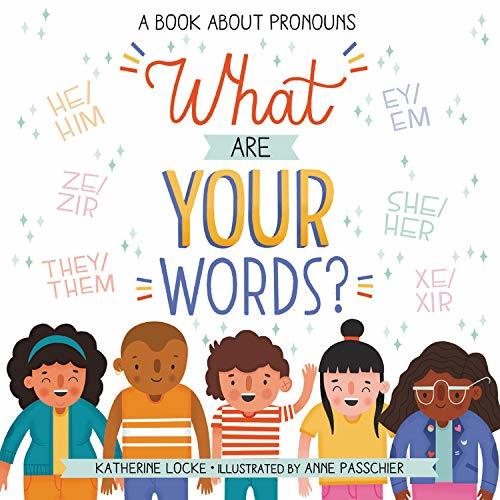 Pre-order for May 2021
Pre-order for May 2021 Pre-order for April 2021
Pre-order for April 2021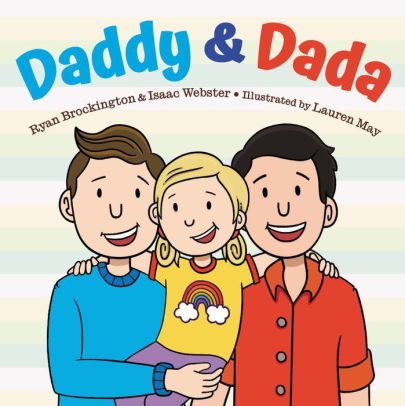 Pre-order for May 2021
Pre-order for May 2021 Pre-order for May 2021
Pre-order for May 2021


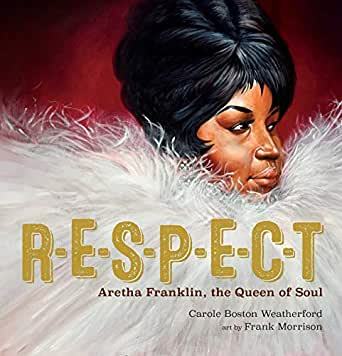

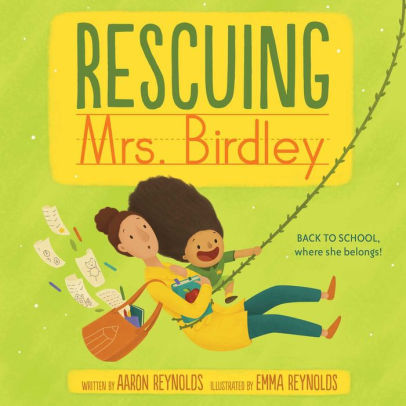





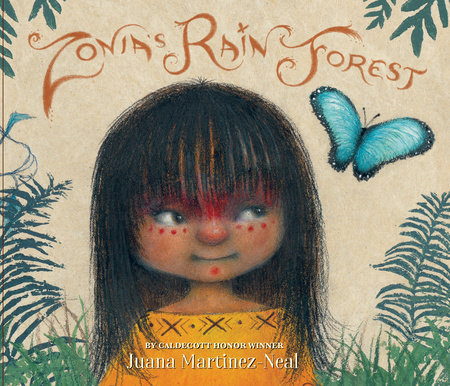 Pre-order for March, 2021
Pre-order for March, 2021
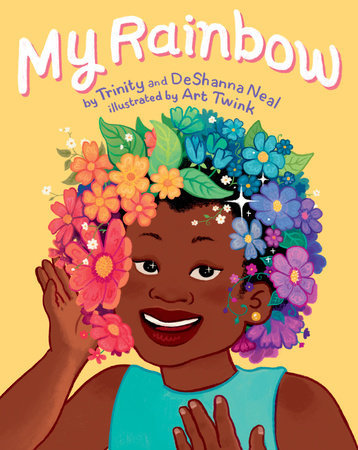


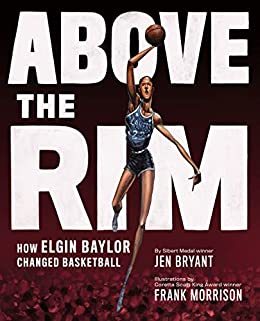










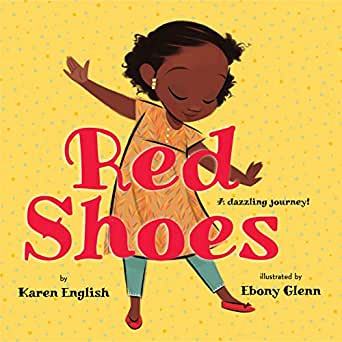





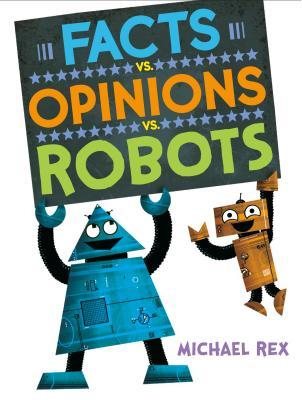





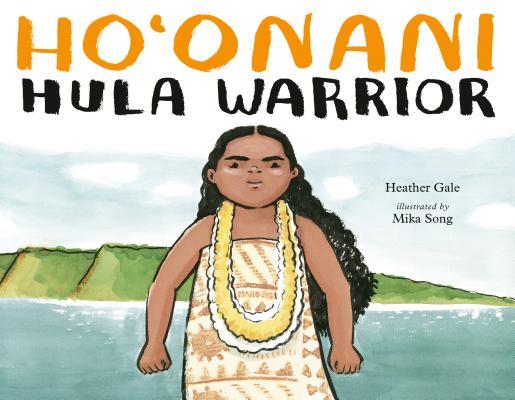






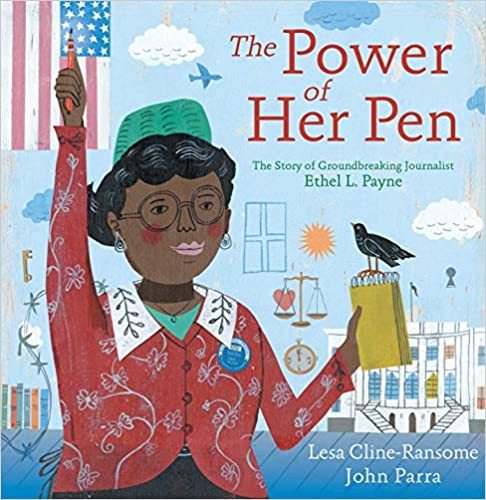



Early Readers
 Bunbun and Bonbon by Jess Keating
Bunbun and Bonbon by Jess Keating Our Friend Hedgehog by Lauren Castillo
Our Friend Hedgehog by Lauren Castillo 
Middle Grade
 Cat Kid Comic Club by Dav Pilkey
Cat Kid Comic Club by Dav Pilkey Class Act by Jerry Craft
Class Act by Jerry Craft The Mirror Broken Wish by Julie C. Dao
The Mirror Broken Wish by Julie C. Dao My Life in the Fish Tank by Barbara Dee
My Life in the Fish Tank by Barbara Dee Fish Out of Water by Joanne Levy
Fish Out of Water by Joanne Levy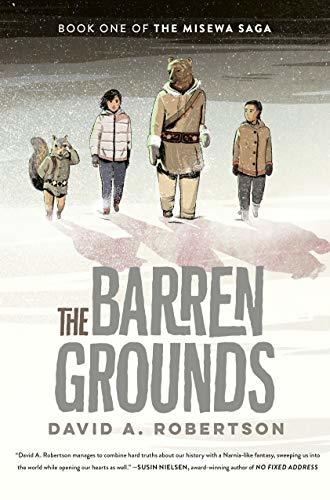 The Barren Grounds by David A. Robertson
The Barren Grounds by David A. Robertson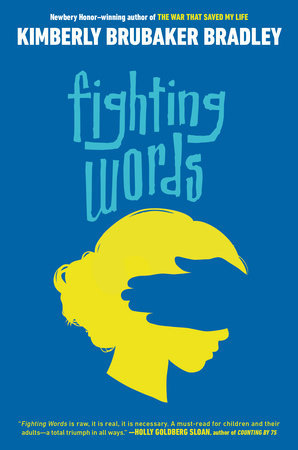 Fighting Words by Kimberly Brubaker Bradley
Fighting Words by Kimberly Brubaker Bradley All He Knew by Helen Frost
All He Knew by Helen Frost Land of Cranes by Aida Salazar
Land of Cranes by Aida Salazar Tristan Strong Punches a Hole in the Sky by Kwame Mbalia
Tristan Strong Punches a Hole in the Sky by Kwame Mbalia The Brave by James Bird
The Brave by James Bird Cinderella is Dead by Kalynn Bayron
Cinderella is Dead by Kalynn Bayron A Wish in the Dark By Christina Soontornvat
A Wish in the Dark By Christina Soontornvat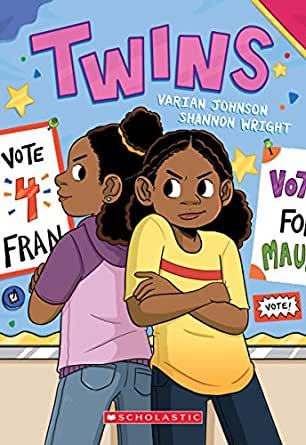 Twins by Varian Johnson and Shannon Wright
Twins by Varian Johnson and Shannon Wright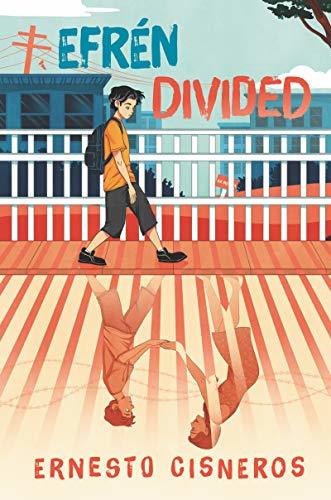 Efren Divided by Ernesto Cisnero
Efren Divided by Ernesto Cisnero Before the Ever After by Jacqueline Woodson
Before the Ever After by Jacqueline Woodson Superman Smashes the Klan by Gene Luen Yang and art by Gurihiru
Superman Smashes the Klan by Gene Luen Yang and art by Gurihiru Clean Getaway by Nic Stone
Clean Getaway by Nic Stone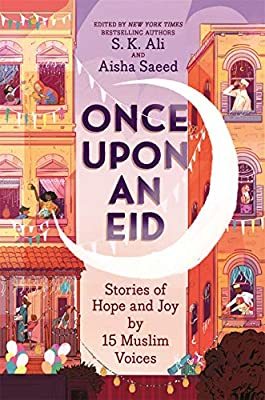 Once Upon an Eid edited by S.K. Ali and Aisha Saeed
Once Upon an Eid edited by S.K. Ali and Aisha Saeed History Smashers – The Mayflower by Kate Messner and Art by Dylan Meconis
History Smashers – The Mayflower by Kate Messner and Art by Dylan Meconis From the Desk of Zoe Washington by Janae Marks
From the Desk of Zoe Washington by Janae Marks The Moon Within by Aida Salazar
The Moon Within by Aida Salazar  Birdie and Me J.M.M. Nuanez
Birdie and Me J.M.M. Nuanez The List of Things that Will Not Change by Rebecca Stead
The List of Things that Will Not Change by Rebecca Stead Snapdragon by Kat Leyh
Snapdragon by Kat Leyh
They Call Me Güero: A Border Kid’s Poems By David Bowles
 Green Lantern Legacy by Mihn Le and Andie Tong
Green Lantern Legacy by Mihn Le and Andie Tong Go With the Flow by Lily Williams and Karen Schneemann
Go With the Flow by Lily Williams and Karen Schneemann The Only Black Girls in Town by Brandy Colbert
The Only Black Girls in Town by Brandy Colbert Rick by Alex Gino
Rick by Alex Gino Stand Up, Yumi Chung! by Jessica Kim
Stand Up, Yumi Chung! by Jessica Kim Trowbridge Road by Marcella Pixley
Trowbridge Road by Marcella Pixley A High Five for Glenn Burke by Phil Bildner
A High Five for Glenn Burke by Phil Bildner Dragon Hoops by Gene Luen Yang
Dragon Hoops by Gene Luen Yang The Ghost Collector by Allison Mills
The Ghost Collector by Allison Mills Bloom by Kenneth Oppel
Bloom by Kenneth Oppel All of Me by Chris Baron
All of Me by Chris Baron The One and Only Bob by Katherine Applegate
The One and Only Bob by Katherine Applegate Hockey Super Six by Kevin Sylvester (Order through a Canadian bookseller and cross your fingers that Scholastic USA publishes it here!)
Hockey Super Six by Kevin Sylvester (Order through a Canadian bookseller and cross your fingers that Scholastic USA publishes it here!)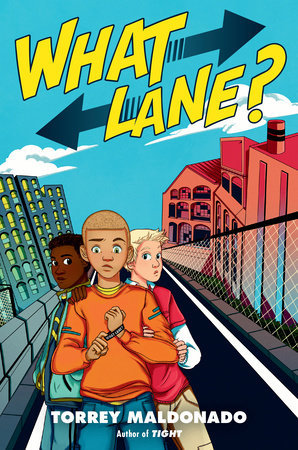 What Lane? by Torrey Maldonado
What Lane? by Torrey Maldonado City Spies by James Ponti
City Spies by James Ponti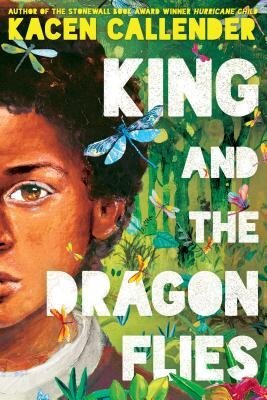 King and the Dragon Flies by Kacen Callender
King and the Dragon Flies by Kacen Callender When Stars are Scattered by Victoria Jamieson and Omar Mohamed
When Stars are Scattered by Victoria Jamieson and Omar Mohamed Witches of Brooklyn by Sophie Escabasse
Witches of Brooklyn by Sophie EscabasseYoung Adult
 Flamer by Mike Curato
Flamer by Mike Curato Concrete Rose by Angie Thomas – pre-order for January 21st, 2021
Concrete Rose by Angie Thomas – pre-order for January 21st, 2021 Furia by Yamile Saied Méndez
Furia by Yamile Saied Méndez Long Way Down – Graphic Novel by Jason Reynolds and art by Danica Novgorodoff
Long Way Down – Graphic Novel by Jason Reynolds and art by Danica Novgorodoff Junk Boy by Tony Abbott
Junk Boy by Tony Abbott Kate in Waiting by Becky Albertalli pre-order for April, 2021
Kate in Waiting by Becky Albertalli pre-order for April, 2021 The Bridge by Bill Konigsberg
The Bridge by Bill Konigsberg This is My America by Kim Johnson
This is My America by Kim Johnson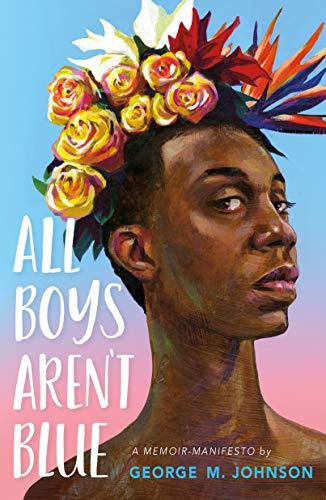 All Boys Aren’t Blue by George M. Johnson
All Boys Aren’t Blue by George M. Johnson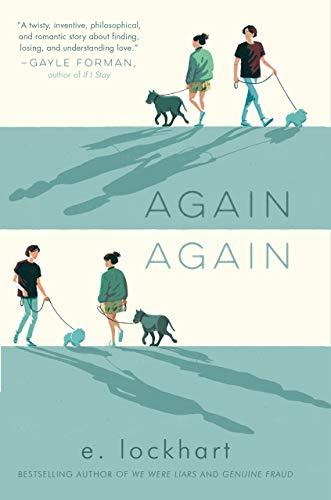 Again Again by e. lockhart
Again Again by e. lockhart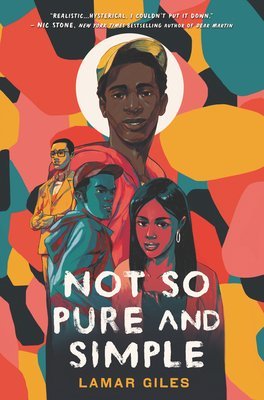 Not So Pure and Simple by Lamar Giles
Not So Pure and Simple by Lamar Giles Wonder Woman – Tempest Tossed by Laurie Halse Anderson and illustrations by Leila del Duca
Wonder Woman – Tempest Tossed by Laurie Halse Anderson and illustrations by Leila del Duca What Kind of Girl by Alyssa Sheinmel
What Kind of Girl by Alyssa Sheinmel Symptoms of Being Human by Jeff Garvin
Symptoms of Being Human by Jeff Garvin The Revolution of Birdie Randolph by Brandy Colbert
The Revolution of Birdie Randolph by Brandy Colbert Thirteen Doorways Wolves Behind Them All by Laura Ruby
Thirteen Doorways Wolves Behind Them All by Laura Ruby The Astonishing Color of After by Emily X.R. Pan
The Astonishing Color of After by Emily X.R. Pan Standing Strong by Gary Robinson
Standing Strong by Gary Robinson Manning Up by Bee Walsh
Manning Up by Bee Walsh The Grace Year by Kim Ligget
The Grace Year by Kim Ligget Golden Arm by Carl Deuker
Golden Arm by Carl Deuker Check Please! Book 2 – Sticks and Scones by Ngozi Ukazu
Check Please! Book 2 – Sticks and Scones by Ngozi Ukazu Dig by A. S. King
Dig by A. S. King Cemetery Boys by Aiden Thomas
Cemetery Boys by Aiden Thomas Clap When You Land by Elizabeth Acevedo
Clap When You Land by Elizabeth Acevedo Dear Justyce by Nic Stone
Dear Justyce by Nic Stone Something Happened to Ali Greenleaf by Hayley Krischer
Something Happened to Ali Greenleaf by Hayley Krischer Shine by Jessica Jung
Shine by Jessica Jung A River of Royal Blood by Amanda Joy
A River of Royal Blood by Amanda JoyNon-Fiction – All Ages Mixed Together
 Lifting as We Climb – Black Women’s Battle for the Ballot Box by Evette Dionne
Lifting as We Climb – Black Women’s Battle for the Ballot Box by Evette Dionne The Talk – Conversations about Race, Love, & Truth edited by Wade Hudson and Cheryl Willis Hudson
The Talk – Conversations about Race, Love, & Truth edited by Wade Hudson and Cheryl Willis Hudson Apple – Skin to the Core by Eric Gansworth
Apple – Skin to the Core by Eric Gansworth The Black Friend by Frederick Joseph
The Black Friend by Frederick Joseph Give This Book A Title by Jarrett Lerner
Give This Book A Title by Jarrett Lerner Just Mercy- Adapted for Young People by Bryan Stevenson
Just Mercy- Adapted for Young People by Bryan Stevenson All Thirteen: The Incredible Cave Rescue of the Thai Boys Soccer Team
All Thirteen: The Incredible Cave Rescue of the Thai Boys Soccer Team Becoming by Michelle Obama
Becoming by Michelle Obama Stamped: Racism, Antiracism, and You – A remix by Jason Reynolds
Stamped: Racism, Antiracism, and You – A remix by Jason Reynolds Almost American Girl by Robin Ha
Almost American Girl by Robin Ha If I Go Missing by Brianna Jonnie
If I Go Missing by Brianna Jonnie Dreaming in Indian edited by Lisa Charleyboy and Mary Beth Leatherdale
Dreaming in Indian edited by Lisa Charleyboy and Mary Beth Leatherdale Urban Tribes – Native Americans in the City edited by Lisa Charleyboy and Mary Beth Leatherdale
Urban Tribes – Native Americans in the City edited by Lisa Charleyboy and Mary Beth Leatherdale A Stranger at Home by Christy Jordan-Fenton, Margaret Pokiak-Fenton
A Stranger at Home by Christy Jordan-Fenton, Margaret Pokiak-Fenton The Fire Never Goes Out by Noelle Stephenson
The Fire Never Goes Out by Noelle Stephenson No Choirboy: Murder, Violence, and Teenagers on Death Row by Susan Kuklin
No Choirboy: Murder, Violence, and Teenagers on Death Row by Susan Kuklin This Book is Anti-Racist by Tiffany M Jewell and illustrated by Aurelia Durand
This Book is Anti-Racist by Tiffany M Jewell and illustrated by Aurelia Durand How to be an Antiracist by Dr. Ibram X. Kendi
How to be an Antiracist by Dr. Ibram X. Kendi
What about you? What were the books that song to your heart? That you have wanted to share with others? That you think deserve all of the praise, the hugs, the shares, the anger? I know I missed many from the year, so let me know, what should I read next? Happy reading in 2021!
November 29, 2020
Virtual Book Clubs in Middle School
Tomorrow, our very first virtual book clubs kick off. The project has been an immense puzzle and also quite a time consumer, and yet, I am excited to see these hopefully take off and help the students not only discuss amazing books but also just be together. We have been apart for more than 8 months physically, I hope that this will be a social boost for many and also a meaningful learning opportunity. I am also excited to jump into this inquiry unit as its focus is whether we already live in a dystopian society? I cannot wait to see what the students come up with and how they will expand their questions and answers as the unit progresses.
As we first started to plan for these virtual book clubs back in October, we quickly realized that unlike previous years, there were a lot more moving pieces to consider and that the orchestration would be a lot more immense. After all, we are fully virtual, kids do not come to school, so how would we pull this off?
So I am sharing everything I have here in this blog post in case you find yourself wanting to do virtual book clubs as well but it feels a little unwieldy. Perhaps the behind the scenes work we have done can help you start with them or perhaps you have some amazing ideas of your own to share. Either way, here you, you can make a copy of everything if you want to edit, just give credit. To see what I have done in previous years when we are in regular learning mode, go here.
To select their books – 4 weeks prior.
We knew that selecting and then distributing their books would be the first major hurdle but once again our incredible librarian team were prepared. They already have a safe weekly pick up for books, what we needed to make sure is that they had enough time to pull the books and prepare them for the pick up.
[image error] A slide from their book club choices
I introduced very briefly the unit in early November and then assigned students this slideshow to go through and select their top 5 books. They were asked to please select a book they hadn’t read before and also pick one that would feel manageable to them. Once students had looked through the slideshow, then then filled in this form so that I could start puzzling them together. And puzzle them I did. It took a while to get all of the students into manageable groups (less than five kids) and also to make sure that we had enough books. Our librarian had given us total number of books available for each title and a colleague had taken the time to breakdown how many books each of us would get. We revealed them in class the following week and kids then could email me if for some reason they had ended up with a book they actually didn’t want or if there was another group they would rather be a part of. Only one student did.
New this year is the short story option, we have a few students who are really trying but life is just a lot right now. We wanted to make sure they could also find success and not feel even more overwhelmed with the proposect of reading a long book. We pulled three short stories (The Pedestrian, Harrison Bergeron, and The Perfect Match), one for each week, and then distributed those to students. We will meet on Wednesday’s (our fully asynchronous day) and discuss the stories. I am excited to see if this will work and how the participation will work out.
The following week, students then picked up their books during our three pick up times. If a students was not able to pick up their book, they would get it delivered right to their mailbox. This was a massive undertaking but it worked, I am so grateful to all of the people who made physical book copies possible for the students to have.
Setting Up their Reading Schedules – One week before
Now that students had their books they needed to create reading plans and also set up discussion norms. In class, we had them work through three tasks: 1. Set up their reading plan, 2. Sign up for their discussion time with me, 3. Discuss and add to their norms. This took about 30-40 minutes, a lot longer than it would in class, but that seems to be the normal pace for virtual learning.
Their reading plan document is housed in the Hyperdoc we have created for the students with resources. This is their one stop shop for everything related to their book clubs such as teaching points, rubric, discussion help, meeting times, and reading plan. While it is available to the students, I honestly don’t know how much they will use it and yet having a shared collection of everything they need can only help.
To figure out their reading plan, they all went to this shared document and broke down their book. We reiterated that they shouldn’t finish their book more than two days ahead of the last day and if they wanted a bigger challenge they could read more than one book. This was hard for some students and easy for others so I jumped around from breakout group to breakout group to assist where needed. One group I am still assisting and will pick up the pieces with them tomorrow.
For their meeting times, I am hoping to have 2 groups discuss in front of me live during our 70 minute block. That means that only one or two groups a class have to discuss outside of their class time. I am also grateful to the support staff I have embedded within our class that are also observing and assessing discussions with us. They know the kids and the curriculum as well as I do. Kids signed up on a first come-first serve basis as it then served as a motivator to get their reading plan completed. They can see the meeting times document at any time, but I have also sent Google Calendar invitations to all of them with the link to our Google Meet for when we discuss.
For the discussion of their norms, we used Jamboard. I have had mixed results with it, but this time I was fairly pleased with how it turned out. You can see what it looked like here. Kids had decent discussions about accountability and also how they wanted this experience to run.
While all of the students have done book clubs multiple times before, 7th grade tends to be the first time they have to decide what they will be discussing and prepare accordingly, rather than the teacher telling them what to track. So we have a “cheat sheet” which really is just scaffolds in order to help them be successful. Some of these discussion points are learning targets from the Teachers College Dystopian Unit which we use as a foundational guidance and others are once we have discovered with book clubs throughout the years. Choice reigns supreme and it is important for us that students can steer their discussions ina natural way, they do not have to stick to these but this is a starting point.
Actual Book Clubs – Three Weeks
So how will all of these moving pieces work? Well, I am hoping (because I am writing this before I have kicked it off tomorrow) that our next three weeks will offer students a chance to work independently, as well as not feel overwhelmed. So in order to make that happen, I wanted to offer them up some self-paced learning opportunities using Peardeck, as well as short mini-lessons using our mentor text Ponies by Kij Johnson, and then give them time to read and discuss as much as possible in class much like we would if this were regular book clubs.
In class time will be spent on a mini-lesson – learning targets again are pulled from the Dystopian Unit created by Teachers College. I will be reading aloud our mentor text so we can refer back to it throughout the next three weeks, as well as any of the mentor short films they will be watching asynchronously. I will also have them go into breakout groups for 5 minutes in order to decide what they want to focus on discussing in their groups this week, before my listening on their discussion I ask them what they focused on and I listen for anything attached to that. They can use the “cheat sheet” linked previously in order to help them. Since tomorrow is the first day, I am thinking it may take a little bit longer to get them started but I need to wrap it up within 35 minutes in order to leave them 35 minutes to read, discuss, and work.
So during their in-class learning time and outside learning time, they will have a few things to work through. 1. They need to read their chapters and be ready to discuss. 2. They need to write down any ideas for discussion as well as find evidence. 3. They need to discuss in front of me. 4. They need to work through two learning opportunities in order to expand their knowledge. They will have all week to do this.
So for their discussion, students will be assessed live. I have yet to create a good electronic version of my rubric so I may just do what I normally do, which is print a ton of these rubrics as I like to write directly on them while they speak, as well as tally how much they say and any page numbers they use. I will then either scan and email it to them after their discussion, or transfer it to a markable rubric that will be posted in Google Classroom under their assignments so that each child has one ( I have it posted right now as an assignment for me to fill in).
For their Peardeck self-paced work, they will focus on two learning targets. The first one is simply diving into a book club discussion and understanding better what it is we are looking for. We normally do this during class time but due to virtual time constraints, it is moved into independent work. The Peardeck looks like this, it is short and sweet and to the point because this is not meant to feel like just one more thing to do but rather an exposure, example, and then a quick check for understanding. For the second learning opportunity of the week, they will learn more about utopia, dystopian characteristics and then compare and contrast their book to these definitions. They will also watch a dystopian short film and then write about the rules and how it links to our current society. This Peardeck looks like this. The students will be assessed on the analysis and evidence they use to draw their conclusions. Normally they would also be doing this in class but these are not normal times.
The next two weeks will follow the same format, I have not created the self-paced learning opportunities yet but you can certainly reach out to me if you would like to see what they look like. We will be focusing on our inquiry question; do we already live in a dystopian society and so the learning opportunities will center around that.
So there you have it, so many moving parts but I am excited and I think the students are too. I hope this was helpful to you, let me know if you have any ideas or questions.
November 16, 2020
To the Some…
Many of my students have yet to finish a book this year.
It’s 2nd quarter. We are fully virtual and have been since the beginning. We read almost every class together, dedicating at least 10-15 minutes of our much too short time together to the act of reading itself. I tell them to find a great book. To sink into the pages. To allow themselves the freedom to just read without a care of what comes next, without having to do work surrounding their book.
And yet, week after week, pages are barely being traveled, some books are not even being opened.
The questioning that has wrapped itself around my literacy decisions is at times suffocating. Other times it spurs me onward. It pushes me to constantly stay in creative mode, to try to think of new and perhaps inventive ways to invite them into reading. To entice them with books. To give them space to come back, to return to habits they left behind on March 13th when school first shut down. But the guilt and feeling of inadequacy is also there, a constant companion as it probably is for many educators teaching during COVID. What normally works, isn’t, because what I am doing is a shell of what it can be. By now, in November we would be soaring in our independent reading, almost all kids would have finished several books and the students who would have loudly declared to hate reading would be working on their relationship with reading and making some small progress. We would be getting excited for our upcoming book club unit, eager to venture into more books with people by our side, ready to discuss, to dissect, to grow in our understanding of society.
But that is not where we are right now. Not many anyway. Not this year.
And so in the search for yet another idea to try, I am reminded of my husband’s words tonight, he is student teaching (can you imagine?) during this time. He reminded me that all of the kids are trying to connect to reading. That they all want to make it better but that they may not be in a space to do that just yet.
That there is no sense in comparing this year to any other year because we have never lived in a time such as this. That when we compare we fail to see the beauty of what is happening, the resilience that continues to be shown and grown in all of our students, in all of us, every day. That perhaps the students have not finished a book just yet, but they are trying. And more importantly, they trust me enough to tell me the truth. They trust me enough so that I can be a part of their journey rather than apart.

Because our students could lie so easily about the books they have or have not read. They could check the boxes. They could walk away and sometimes we would not know.
But instead, they show up. Despite the internet failing. Despite their computer freezing. Despite being quarantined because another member of their family tested positive. Despite everything being cancelled. Jobs being lost. Friends being far removed. Despite the world and its endless hatred toward so many. Its endless inequities and disparities. Despite having never met me in person, never stepping foot as a 7th grader into our middle school. Owing me nothing. They still show up, they still tune in, and they still try.
So I continue to try as well. Not driving myself to exhaustion because this has to work for all of us but falling back upon the ideas we know work even if they don’t in the same way right now.
I book talk books that may never be read. But every class, there is a new one being introduced.
I offer to bring books to their mailboxes that they may never read.
I give them time to read even if it is not used.
I ask them to search for value within reading even if they see none.
I ask them to tell me about their reading lives even if they have nothing positive to tell.
And we discuss. And we build trust. And we build community.
One conversation at a time. One decision at a time. One page at a time.
And I read aloud right now, even if I don’t know if they are tuning in. Because some are. Because some are ready to be reactivated into reading. Some are ready to fall into the pages of a book because their lives allow them to. Some never left.
And so we make space for them all, we center our practices and decisions not in further work for them to somehow increase accountability but instead in what we know works. Even now, even if it takes longer.
We center it in choice.
In access.
In time to read.
In community.
In conversation.
In finding stories that they can see themselves in and in stories of lives they will never live.
We center it in them. Their chocies. Their lives. Their words. Their journeys.
And we make space for them all. Not for the kids we hoped would be here but the kids who show up. Who show up despite the world trying so hard to stop them.
And we show up too. And we see the small moments of success for all the kids who are trying and remember to give ourselves some grace too. Because we are right there trying as well. Because we are also far from what we had hoped we would be at times and yet we show up too, and we try, and we create, and we breathe and step away so we can come back the next day.
Perhaps what I need right now is not another new idea, but instead a moment of celebration. Of appreciation for all of us and what we are creating.
The reading will happen. It may just take longer. But look at how far we have already come.
November 11, 2020
How About a Digital One Pager?
I continue to teach virtually 140 minutes a week English with my 7th graders as COVID-19 explodes around us. As we settle into the 2nd quarter we wanted to increase our focus on independent reading, as well as center our community in a read aloud. Looking ahead to December, we will be doing virtual dystopian book clubs and we wanted to provide students with some scaffolds leading into the discussions we hope to have them have do while recognizing that students are in many different parts of their reading journey. The COVID reading slump is significant, some kids are still not reading, and some still struggle with sustaining their attention to a text even when they are reading.
With all of this in mind, we decided to focus on a read aloud in November; Before the Ever After by Jacqueline Woodson. A few key factors led to this incredible book; it is a beautiful story of family, community, and friendship and how you navigate hardship. It is free verse, it is accessible for all kids, and it is short. We knew we would only have 7 x 70 minutes for the read aloud and for the mini-lessons, that’s not a lot. Alongside the read aloud, we wanted students to focus on their independent reading books but also give them a little more urgency in their reading. While we do not have students write about their reading all through their year, we wanted to use this month to get them set up for discussions and deeper explorations into their texts. In the past, we have used one-pagers for this work or character autopsies. I have loved the art component of these assignments, as well as the brief glimpses of text analysis it would provide us with but had to wrap my head around doing this digitally as I cannot assume access to art supplies. We could use these projects as a way to review and introduce new concepts without students having to write a literary essay.
As I searched online for digital options for this project, I found many for sale but none of them seemed to fit what I wanted to introduce to our students or even review. So I decided to create one that fit our needs and hopefully would also be manageable for the students and not create an unnecessary burden in their reading lives, as did my amazing colleague, Liz.
So here is a copy of what we are mostly using with students. This one is a bit longer than the one I am using but I like all of the options provided here. I envision this being cut down to fit the unique needs of your students, I would not assign all 13 slides. This is not anything new or hugely innovative but it does help us see where students are at in their reading comprehension, as well as help guide them.
[image error]
The first slide is a review of story elements. One of the concepts we see a need to develop is simply recognizing narrator, as well as the setting’s effect on the story.
[image error]
The next slide speaks to plot diagram, while we discuss that not all stories are told in this way, we do want students to be able to recognize different parts of their stories as a way to think about their own writing as well. Many of my students are still working on figuring out the climax of a story so this provides them with a review of some of these components.
[image error]
We will be discussing conflict in our story more than once, this is a slide I did not assign this time though due to time constraints.
[image error]
Analysis is a huge focus in 7th grade and we want students to find meaningful quotes and then be able to discuss why they are meaningful to them. This also leads into work about connections to our books and to the world, as well as how literature can be powerful and lead us to action.
[image error]
Characterization is also a major focus as my students are developing people watching skills. We discuss a lot how analysis in literature is really just practice for how to read life situations and that when we can read people and situations well, we can often navigate them more smoothly. Tracking one character and how they change throughout the story is proving to be interesting for many students as they can often see the changes happening but don’t necessarily understand why the character changed.
[image error]
In 7th grade we expand upon theme, moving from theme idea to theme statement. Many students are great at recognizing theme ideas but have a harder time putting into word what specifically is being said about this theme. For this slide I want them to have an introduction but not dive too deep into it yet. In our dystopian unit, we dive much deeper into power structures, societal messages, as well as what calls to action a text provides us with, this therefore serves as stepping stone into that work.
[image error]
Finding images or drawing images that have a connection to the text is another way to deepen our understanding and analysis of a story. When we can see beyond the story and conceptualize further connections, we are digging deeper into our analytical skills and complex thinking. One way to practice this is to ask students to move beyond the obvious and think of abstract representation and connections to the curriculum.
The slides attached also have 3 choice options; a deeper dive into the setting, finding a song that connects to the story, as well as timeline slide – all comprehension strategies that will further the understanding of the book.
We have made a few adaptions as well for some students: A few students are refusing to read outright or this work is simply too overwhelming, so they are working through these using a short story instead. We have also discussed having students record answers rather than write them out if needed. Students could also choose to do this by hand and do more of a true one-pager with a bigger emphasis on the artistic components which are downplayed here, rather than this digital version. In my student version I also link to the one I am working through with students, as well as have videos explaining how to fill it in.
As always, feel free to use, or let me know how you would improve it, this is definitely a work in progress and always hindsight is 20-20. After releasing this to students to start working on Sunday, there are already many things that I would do differently, this is therefore the new and improved edition.
October 29, 2020
WriteReader – A Powerful Book Creator for Students
My own kids have been busy writing. In this time of virtual school where screen time is seen as both exciting and dreaded, and school is mostly something to be done with because they have been sitting in their rooms dictating, writing, and creating books for each other to read, running excitedly out to show me their latest creation.
Ida wrote a 5 pages story about a witch who lost her way.
Oskar wrote a story about candy and how he is the coolest, clearly.
Augustine continue to play with her letters as she tries to figure out how to best write the few words she knows how to spell in her story about her puppy.
The glee is contagious and the writing is furious.
What has gotten my own kids so fired up about writing, even the 6 year-old who has repeatedly told me that she does not need to learn how to write?
A research-based web-based book creator that not only allows for exploration of language but also drives them to expand their stories through letter-sound tools, recording capabilities, and a variety of templates that let them control the look of their book.
Why are we loving it so much at home? Because my three youngest kids with varying degrees of writing capabilities are totally engaged in their books and the excitement for writing is contagious as they create, publish, and read.
[image error] Ida’s book about a witch that had to find monsters was a big hit with her siblings as she recorded the story.
There are a few things that are really pulling my kids in with the biggest for me the less is more approach. As my own kids are inundated by “educational” games that are more focused on the gaming aspect rather than the learning aspect, WriteReader is a breath of fresh air. This tool is used for creating beautiful books, for exploring their writing skills, for written language acquisition, and for feeling accomplished. The kids can easily navigate it on their own, have figured out how to add pictures, speech bubbles on the pre-loaded templates, and also how to record their own voice. The reward is the creation process, the ability to be authentic writers beyond just the teachers’ eyes, and seeing their published books being read and shared, not points or tokens.
[image error] Augi’s book about a frightened puppy is taking shape
I also love how this product offers kids a way to learn through creation, taking chances with their writing and still feel like accomplished writers. This looks and reads like a book that they have created. There is no dumbing down of the work they are attempting and the finished product looks polished. The pride is palpable in my own kids.
Another lovely feature is that the books can also be printed, which my kids wanted to do immediately of course. They can also be shared with others through a link, so you bet the family is getting some reading materials right now.
As a teacher, I can see using this tool in many ways implemented into stations and throughout writer’s workshop and even though it is geared more toward younger students, I do think that older students could also use it for things like flash fiction and prompt writing. You could create templates for the students to go into and edit and students could see each other’s books as they are published. All it takes is an account for students to log into and they are ready to go. If students want to share their book in a broader way, the sharing capabilities open up great potential for impacting others with our words.
In our virtual learning right now, I keep thinking of how important it is to build community. For years telling stories, creative writing, and sharing our stories has been the cornerstone of my classroom. We have seen how storytelling can bond us all so why not use a tool like WriteReader to share our stories? We may not all be together right now but on the bookshelves in our classroom we can be. The free version allows for up to 100 books to be created plus other basic features, a great way to get started with this tool.
Still not sure if WriteReader would work for your students? My 6 year old just asked me to bookmark it so she can find it any time to write more stories and then told me that she didn’t want watch TV because she would rather tell more stories. I don’t know what further testimony you need.
I am not getting paid for this post, this post is written to hopefully help others discover this powerful tool, a way to pay it forward since I was lucky enough to be shown this tool myself. So where could WriteReader fit in for you? Perhaps as another powerful writing tool that can seamlessly fit into the components you already have? Or perhaps a much needed boost that brings our students together in a world that seems upside down?
Wherever it goes, I think you will be as excited about it as I am.
October 25, 2020
Helping Students Navigate the COVID Reading Slump
One of the most common conversations I have had with students over the last 7 weeks has been a description of what COVID has done to their reading lives. How they haven’t read a book since March, how their attention just seems to not be there, how they cannot seem to find the time, energy, or even the books they want to read. They know they should read but…the world just seems too big right now, their work is piling up, they are just too tired, and they just can’t. And we are not even together, I teach fully virtual, a constant reminder that here in Wisconsin, much like many other places, COVID is exploding and claiming more and more lives. The kids are not okay and neither are the adults.
It’s not just in our classroom that this is playing out. I recognize this disconnect from reading in my own life. Since March 13th, the world has been heavy. The work has been heavy. The books call quietly but I look at my to-be read shelves and it feels like work, not like an escape. Not like something I can do to relax. When I speak to educators globally, they share the same stories; the kids are not reading, how do we help them find joy in reading again? How do we make reading something important to us all when there is hardly any time to do anything?
So in room 203, we have focused on connecting with each other again. We have focused on meaningful work, conversations, and access to books. Is it fully working, not yet, but I am seeing a difference using the following tools to bring them back, one by one, and I think they are seeing a difference too.
Recognizing the enormity of the world. We will never work through this if we don’t recognize and try to understand the unique situations that students are working through. With the pressure to do school like normal when our times are anything but, we can easily forget that this is not normal, that it makes total sense that kids are not reading, and that assigning more accountability work is not going to be the way to bring them back to reading, far from it. So resist the urge to assign more work with their reading so they have to get a grade or get it done, more than likely assigning all of that extra work surrounding their reading is going to push them farther away from wanting to read rather than the opposite. Instead focus on each child’s humanity, recognizing that we are all doing the best we can everyday and that while that means for some reading is not a part of their life at this moment it doesn’t mean it won’t be. But we cannot plan and teach as if the world is not upside down.
Assigning less work. If I want kids to read then they need time to read, this means I need to assign less asynchronous work in order for them to actually have more energy to read. But it cannot just be English class, across the board we should have a schoolwide conversation about the work being assigned because if we are piling on so much work that kids don’t have energy or time to read then we have lost our way on the experience we should co-create for all kids. I know many of us are striving to keep the work challenging and plentiful but let’s not sacrifice reading joy on our way there.
Physical book access. I have marveled before at the comprehensive plan our librarians created to make sure students could still request physical books from our library and how they have helped us get books out to students. And it is working, one book at time, we see kids get excited about the stack of books they are either picking up or having delivered. Students can request both books from our school library or classroom collection using different forms, they can request specific titles or a bag of books that fit their interests and needs. While we also have digital access to books, the physical books seem to be making the biggest difference.
Continued conversation. I have written before about the daily reading conferences I am doing with students and how much hope they bring me. Every child is scheduled via a Google Calendar invite for a 15 minute reading conference every three weeks. We discuss how they are doing, how school is going, and then how their reading goals are coming – in that order. I have Wednesday off as our collaboration day for adults and kids who miss their check-in meeting can either reschedule with me or do a Flipgrid video where they answer a few pre-determined questions and I at least get a small glimpse into how they are doing. Then we try to meet again in the next cycle. The conversation is casual and centered in their reality. It allows me a chance to check in on them as far as how they are doing, if I can support with anything and then we talk about reading. There is no judgment as far as where they are at in their reading and whether or not they have been reading, but instead a conversation about how they can work on their goal. Do they need books? Do they need a new goal? Do they need help in some way? As one student ended our conversation with last week, “This was so nice, I really needed this,” and I couldn’t agree more.
[image error] One of the pages of their reading identity digital notebook can be seen above, this is the 6-week reflection page they will be filling in tomorrow.
Setting 6 week reading goals. Within our Digital Reading Identity Notebooks, students have a place to set a 6 week reading goal. We do it in class together, discuss what realistic goals can look like, and then discuss it during our individual reading conferences. Goals range from slowing down their reading to actually reading outside of class time and many other aspects of their reading journey and identity. Tomorrow in class, we will spend time reflecting on their first goal, write about it, and then use their reading data to come up with a new reading goal for the next 6 weeks. Their goals should be specific to their journey, challenging in a realistic way, and also something they actually want to work on. This gives me yet another glimpse into who they are and how I can best support them.
[image error] A snapshot of some of the question on their reading survey.
Weekly reading reflection. Every first class of the week, students do a very brief survey that allows them to take stock of their reading habits for the previous week and allows me a quick glance at their reading and what they may need from me. This is the data they will look at tomorrow when they reflect on their last 6 weeks. The survey takes less than 5 minutes, the students think it is easy to navigate and best of all, they answer honestly, knowing that it is a tool to help them not punish them because there is no grade attached to their answers (or to their independent reading for that matter).
[image error] Tomorrow’s book talk slide
Daily book talks. I am still doing very casual daily book talks featuring new or old books. While they are not having the same impact as when we are face to face, a few books have been requested after I have book talked them and that is enough for me to keep doing them. The booktalks are short and sweet, I have the cover on a slide and then discuss what I loved about the book, then I read the blurb. It takes us less than 2 minutes but allows the students to get a feel for the books we have available to the them in class.
[image error] Book Speed Browsing is coming back in November
Book Speed Browsing. I wrote about the September book speed browsing here and how it gave students a larger glimpse of the books we have available to them. I am currently working on one for November, the major change is that students will be asked to read about each book rather than just choose 5 and there is not a form they have to fill in but instead that students can choose to request books if they would like. This tool is meant to give them a broader access to our library and hopefully entice some more reading for the kids.
Independent reading in class. The first thing we do after I have greeted all students is to read. While we have a lot less time together than we would normally, the most important part of our time spent together is the time we dedicate to independent reading every class. We read at least 30 minutes in class spread throughout our two classes of the week. Students start to read after I have greeted and spoken to them, I ask them to keep their camera on if they can or once in a while they flash me their book cover quick as they read. Are there kids that don’t use the time for reading? Absolutely! We are working on that just like we would in class when kids choose to fake read or not engage at all. But many kids are reading and for some kids it is the only reading they are doing every week. This will always be the most protected activity we do. I cannot tell students that they should read outside of class and then not give them time to do so in class.
Listening to tips from students. As always, our students have great ideas for how they can navigate their reading lives. A few ideas from students have been reading two books at the same time – switch between books as one gets boring in order to actually finish books and keep their attention. Try a new format – what is something you haven’t tried before, now is a great time to try graphic novels, novels in verse or audio and shake up our reading habits. Try a new topic or genre – perhaps changing up the familiar will help you. Find a new routine – our routines have been disturbed greatly and so the habit of reading may have slipped out of routine as well, when does it make sense to let reading happen?
Patience. We are facing uncertain times and even if we feel like we are ready for the Corona virus to be done, it is still here. That means that kids, and adults, will continue to have their mental health affected, that the world will continue to be heavy, that reading will continue to be a chore for many. But we can take small steps, we can continue our focus on it as a central gathering point in our class, and we can continue to encourage our students to find books that speak to them, that connect to who they are, that they can find value in even if joy is not there right now. And we can wrap that up in the best practices we know, not forcing ourselves into more accountability work, but instead allowing the act of reading independently to be something we do as a community, something that we do to take care of ourselves, something that we do because it allows us to transport ourselves to a new world, even if just for a moment, and that can sustain us for a long time.
So I hope this blog post was helpful, please share your ideas in the comments, and allow yourself to breathe. Reading is not lost for all, it may just be hidden right now, but together we can reignite reading for ourselves and help others as well, as long as we start with connections first.



